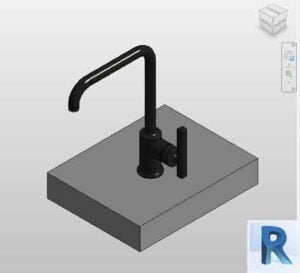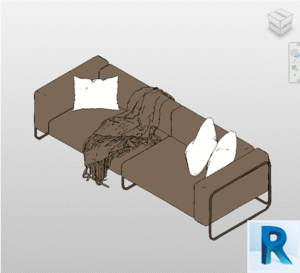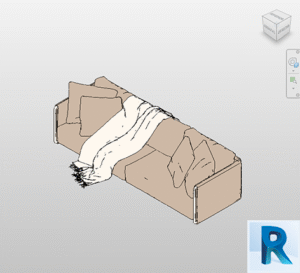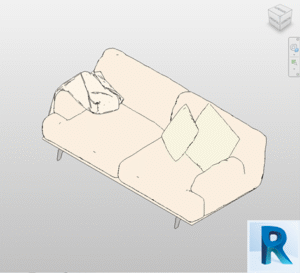In modern construction and engineering, efficient data management is crucial. As projects grow increasingly complex, the need for structured and interoperable information becomes more pressing. One such solution is the eCOB , BIM (Building Information Modeling) standard developed by the Instituto de Tecnología de la Construcción de Cataluña (ITeC). This standard facilitates the creation of comprehensive BIM objects while ensuring seamless communication between different software platforms. But what makes eCOB such a game-changer?
eCOB: More Than a BIM Standard

The core of eCOB lies in its adaptability and openness. Built upon the internationally recognized IFC (Industry Foundation Classes) standard, it caters specifically to European and Spanish regulatory frameworks like the EHE (Instrucción de Hormigón Estructural). Unlike other rigid standards, eCOB ensures interoperability, which means that project data remains fluid across different BIM software. As a result, stakeholders can collaborate more effectively, making the decision-making process smoother and more transparent.
Expanding Beyond Geometry: The Multidimensional Nature of eCOB
BIM objects in eCOB are not just about 3D geometry. They encompass several dimensions of data—4D (time), 5D (cost), 6D (environmental impact), and 7D (maintenance). This multi-layered structure allows project managers, engineers, and architects to visualize the project comprehensively. The result? A more informed planning process that considers not only the physical aspects of construction but also its cost, timeline, and long-term sustainability.
Key Features of eCOB: What Sets It Apart?
The eCOB standard is divided into two fundamental parts:
- Part 1 focuses on the foundational concepts, such as the structure of the standard, its versioning, and its nomenclature.
- Part 2 sets specific requirements for creating BIM objects. These specifications ensure uniformity and rigor, which are essential for maintaining consistency across various projects.
By adhering to these well-structured guidelines, professionals can create objects that integrate smoothly into any BIM project, regardless of its scale or complexity.
Enhancing Collaboration through a Unified Framework
A major benefit of adopting eCOB is the streamlined collaboration it enables. In construction and engineering, multiple stakeholders—architects, contractors, suppliers—need to exchange information consistently. eCOB facilitates this exchange by providing a common language. Whether you’re working with different teams, tools, or even across borders, the eCOB framework ensures that everyone is on the same page.
In practice, this means fewer errors, quicker decisions, and a significant reduction in miscommunication. For example, imagine a project manager in Barcelona working with a construction firm in Madrid. Thanks to eCOB, they can easily share BIM objects without worrying about compatibility issues, ensuring the project moves forward without unnecessary delays.
The Path to Better Project Outcomes
One of the key reasons why eCOB stands out is its potential to improve overall project outcomes. When all stakeholders have access to consistent, structured information, the project naturally becomes more efficient. The standard enables better coordination and clearer communication, which are vital in reducing errors and managing timelines effectively.
Moreover, by incorporating aspects like environmental and maintenance data (6D and 7D), eCOB allows for projects to be not just well-constructed but also sustainable in the long run. This attention to detail ensures that decisions made during the design and construction phases are informed by long-term considerations, such as how easily the building can be maintained and its environmental footprint.
Beyond Cost Savings: Sustainability and Innovation
Cost efficiency is another critical advantage of using eCOB. By standardizing the information shared across BIM platforms, the need for rework and corrections is minimized, which directly translates into cost savings. Yet, the impact goes beyond the financial aspects. The ability to foresee and plan for maintenance or environmental considerations helps create projects that are not only built efficiently but are also sustainable and innovative in their approach.
This is particularly relevant as more industries push toward greener, more sustainable construction practices. eCOB, by embedding environmental data into its framework, aligns perfectly with this growing trend, encouraging more thoughtful, forward-looking project designs.
The Future of BIM with eCOB
The eCOB standard is more than just a tool for object creation in BIM. It represents a shift toward a more integrated, sustainable, and collaborative approach to project management. Its ability to provide a structured, yet flexible framework for BIM objects sets it apart, ensuring that professionals can work seamlessly across platforms and regulations.
For anyone involved in construction, engineering, or architecture, adopting eCOB is a step toward not only improving project outcomes but also embracing a more sustainable, efficient future.
Free Revit families now on Bimshares.com





